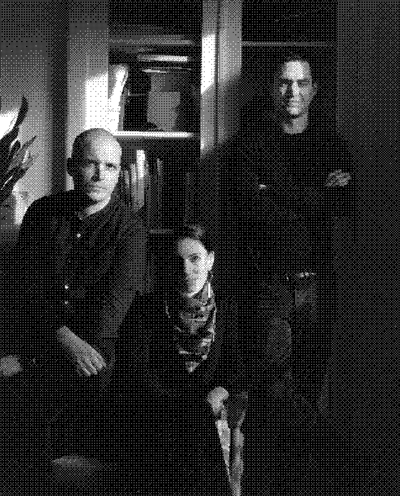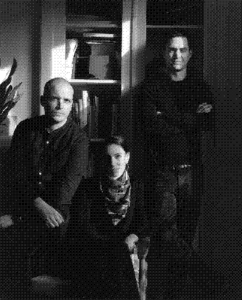Could you please introduce yourself?
I am Liza Enebeis, creative director of Studio Dumbar.
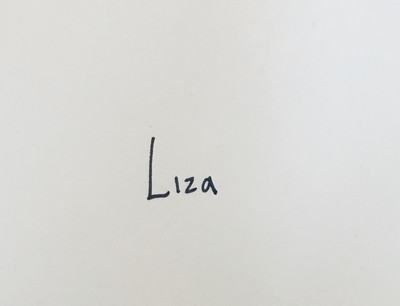
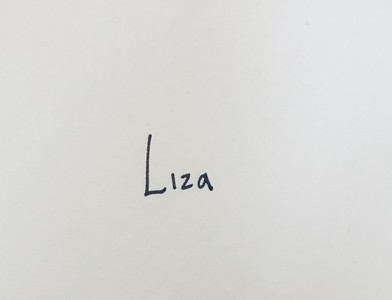
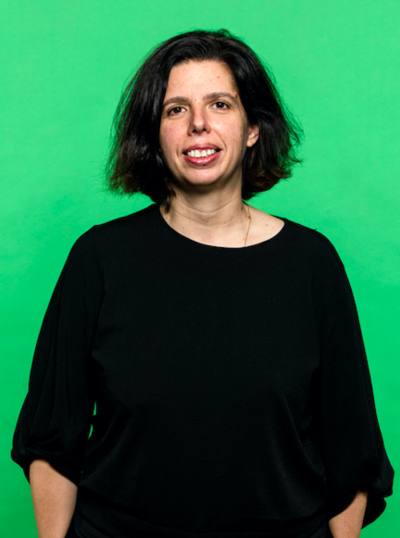
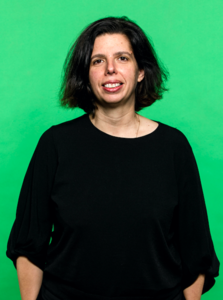


What’s your current state of mind?
I would say I’m optimistic and looking forward.
Looking forward to…?
There is always that “looking forward to”… Especially in the last year, one way to keep optimism is to look forward. If you don’t look forward and keep looking at the situation, reading the news, you can become very pessimistic. With most things, I always like to look ahead.
Is optimism also part of Dumbar culture?
I would say so, the Dumbar culture is also a team culture. Everybody says “family”, of course when you spend so much time with someone, it becomes family because it’s the people you end up seeing the most. But it’s really a working-together culture. We like to experiment, to challenge each other, in a positive way. It’s like: “OK, we tried this, why not try that?”, or “Maybe there is another answer”, or “This didn’t work out, maybe there is another answer”. So yes, optimism.
How many people are working at Dumbar at the moment?
Seventeen.
Could you describe a project which reflects Dumbar’s DNA?
Amsterdam Sinfonietta is a good example. We believe in the trinity: pure, simple, and powerful. We strive to get to the essence of a brand, strategically and creatively – that’s the purity. Then we bring it to life with a design as simple as possible. If you succeed in this approach, by definition the visual identity will be powerful and live beyond trends of fashion and taste.
Amsterdam Sinfonietta is one of our long-standing clients. They are a world class string orchestra. Recently we were asked to redesign their existing identity that was also designed by us 15 years ago.
Our first step was to redefine their strategy and really come down to what defined them. They continually strive for excellence, performing classical music with a uniquely inventive spirit. The main theme of our strategy, metamorphosis, reflects the orchestra’s innate drive to create new experiences, as well as the fleeting, transformative nature of music itself. To communicate this notion, we created a custom code that transforms music into dynamic patterns (still and in motion), made by repeating the brand’s AS acronym in an endless variety of configurations.
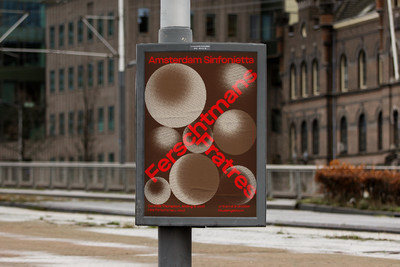
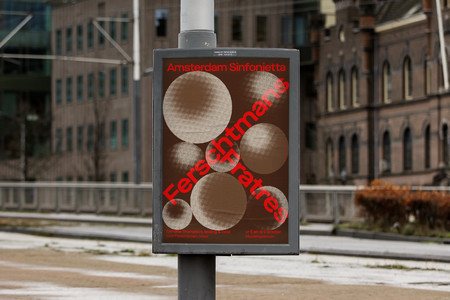
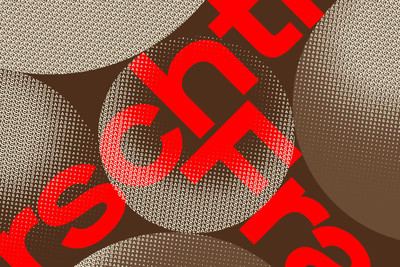
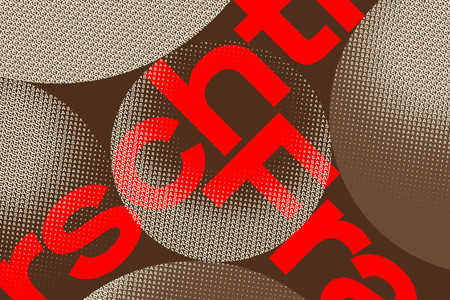
About the studio’s Dutch heritage, we have an idea of what it means, but being French, we don’t have the same design culture, so how would you describe it?
It’s an interesting subject because I’m not Dutch myself…
Where are you from?
I’m from Greece, so I’m an outsider as well. But for me, Dutch is about openness and it’s really the understanding and the respect of each other, and each other’s needs and intentions. With openness there is a lot of honesty, especially in our work methodology. Dutch people are really working together.
It has to do with the geography and history of the country. It’s a flat country, the land was reclaimed and in order to create something like this, you have to learn to work together, you cannot have your own kingdoms. You have to work with your neighbours, to look at the interest of your neighbours and bring them together with your own interest to create good results. That way of thinking is ingrained in the Dutch culture and its design.
I see it in the way we work in the studio but also in the way we talk about design with clients. It is a dialogue. It’s typical of this Dutch heritage. We are founded in the Netherlands so that mentality and openness is really in our way of working.
You are an international studio, so do you see cultural differences among your clients from different countries?
We are very open, we think it’s important to share all the sketches we are working on. Clients from abroad can be surprised as they sometimes expect the final products without seeing the sketches. Also, they can have different ways of communicating. In the Netherlands, you want to be very clear about your expectations. In some other countries, the way you like or dislike something is not always communicated in the most direct way…
Do you have any examples in mind? Because that makes us think of one of our first job with English clients giving feedback with understatements such as “It’s interesting” when they actually really don’t like it. (laugh)
Correct, I had the same thing when I worked in London. That was my first job also. People said things were “interesting” and everybody knows this one, it’s a classic…
On the other hand, when I moved to the Netherlands, people were saying: “That doesn’t work, or maybe you should do this”. This was quite confrontational, and I thought I was a just terrible designer because I thought they liked nothing I did. But they were thinking: “I’m just giving an opinion and you can do whatever you want with it”.
It’s just a big contrast and a question of understanding the codes. Sometimes, it can be misinterpreted as rude, but it’s not meant to be like that.
One of the designers we interviewed said it was really Latin to be confrontational for the sake of arguing.
Exactly and I think that may be true. I’m Greek, but I do have colleagues that sometimes say “I disagree” for the sake of disagreeing. “If they say red, you say black”… I don’t know, it’s always been like that.
You presented the studio as it is now but what was your first impression of Studio Dumbar?
I knew the studio from the 1990s because I was also an intern there. Then I left, I went to study, and came back many years later.
For me, it was a studio where everything was possible. I looked at the work and – at least as a student – I was so impressed that projects like these were possible and that clients agreed to some of the things I saw.
I really went there thinking: “OK, if I’m here and starting as a senior designer, everything must be possible, there is no limitations here”. It put very high expectations for myself, I worked very hard. And I admired lots of designer who were working there or have left. It was really encouraging because if you go there with the idea that everything is possible you don’t limit yourself in what you are doing.
You mentioned that openness, that understanding which is linked to the studio culture and the Dutch heritage. Being Greek, how did you maintain that culture when you became creative director?
If you are an outsider, you notice it more than if you are an insider. It’s always important to stay foreign, like a tourist in a sense. Because you always notice things that people who live there for a long time don’t notice anymore. You really appreciate things and you help people to appreciate what they have. That’s also an important mentality for design. When you get a question, step outside and look at it. You could say: “I’m designing again another logo”. But if you step back and look properly, it’s like you are a child again, everything is new. That’s a feeling you need to keep.
You mentioned being Greek and working a lot in London before going to Netherlands. When you started, what were your creative references?
One of my design heroes is Tibor Kalman, I think he is an unbelievable man. I used to collect all of the Colors magazines from Benetton. They were so confrontational, and the Colors magazines were a proto-internet in a way. You would type the subject such as “food” and you would find every single angle about food in any possible way.
I did my bachelor’s degree in Paris, so I lived there for four years. There is a bookstore there, La Hune. What I loved about that bookstore was that it was opened until midnight… Is it still open until midnight?

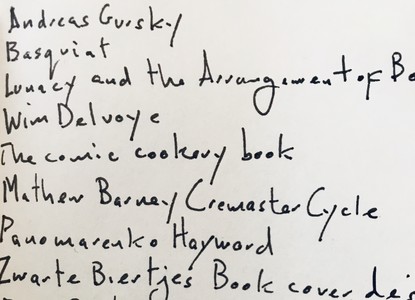
No, sadly it doesn’t exist anymore it’s now a sort of rentable exhibition place. (laugh)
I remember I would go there on Saturday night. I would go there to look at all the art and design books. That was the best place.
Which new creative references have you acquired now?
Before, you were limited to a selection somebody had made. Twelve people would be selected for their work in a book and you would only be shown these twelve people as references and that was it.
I find it a lot more democratic now, thanks to the internet: you can see so many people from all over the world and it doesn’t matter if they are big or small names, if they are good or bad, or famous for a day… I don’t care about that. You can be inspired by people from all over the world. And there are a lot of different new technologies when it comes to motion and that’s exciting.
You started with print and you mention searching for elements at that time going to La Hune. Is this why you have some side projects which are a bit about curation such as your Instagram or Typeradio?
When I was a kid I wanted to live in a museum. I wanted to have a museum and collect. I think sometimes when people come to my house, they think it’s a museum. I have one space with nothing, but downstairs is another story… (laugh)
I am interested in other designers, what they have to say. Giving a voice also to design and giving people a platform to speak up. People have interesting points of view and I like to share that with other people. Typeradio is one of them, then the DEMO Festival that we organised last year for people who work with motion. I’m attracted to it. When we started Typeradio, of course there were platforms where you could read about type designers, but you couldn’t hear them that much. That was one of the first podcasts, it was a way to give them that space. The same thing happened with DEMO. When we did this two years ago, I think it was the first time there was such a big group of people coming together to share and see the work in a public space. And that was also important to not keep it just for us designers but to share it with the public.
Demo Festival, 2019
Can you tell us more about DEMO?
DEMO, it’s for Design in Motion Festival is definitely one of my favourites. We initiated, organised and designed the largest motion festival in the world!
I think it was as early as 2017 that we had the idea to share the beautiful work we were seeing with a wider audience and create an exhibition accessible to a bigger public. We were lucky enough to be introduced to Exterion Media, the biggest outdoor media owners in the Netherlands who became our partners in this project and offered all their screens that were located in Amsterdam Central station for 24 hours to showcase motion designs from designers all around the world.
Our first step was to design the identity, a grid that is continuously moving and a typeface that also changes form with movement. This was our starting point and we went from there.
Once the identity was set – we had a huge call for submission. We received over 2500 pieces of work from 70 countries – it was unbelievable. We had over five rounds where we looked at the entire body of work – over 18 hours of viewing for each round.
Demo Festival, 2019
With which criteria in mind?
Concept, technical innovation, and above all if the work challenges the parameters of the media. Koos Breen, Xavier Monney, and myself, the curators, have different backgrounds and expertise so the discussion became quite lively at times.
But we did it and on 7 November 2019, DEMO took over Amsterdam Central Station, 80 screens, four video walls showing pure motion.
It was magical just seeing passers-by and visitors staring at the screens, the whole station was at a standstill.
It also proves the importance of how and what we display in a public space can have a big impact on our daily lives.
A demo of DEMO
Don’t you think it’s all going back to your desire to have a museum: inspiration/curation/transmission?
Yeah maybe, but the problem I have with a museum is that it’s a very closed space. Now, I would never say I want to have a museum. Now, it would be more a public space. If tomorrow Amsterdam Central Station says that I can have the screens everyday for one hour to show works from designers, I would do that.
Are these side projects a way to maintain a high level of creativity?
It’s a way to inspire yourself, you look at work, you get in contact with different people, you exchange ideas… especially in the studio working with a team. I do not work in isolation.
What type of creative director are you then?
It depends if I’m in a bad mood. (laugh)
Whatever works best for the project. I’m more there as a creative director to guide, to help designers to push their ideas further. I always say I know where we have to go, but I don’t know the road to get there. We need to leave it open to get to an answer, then you will be surprised. If you give strict design directions, you also limit the results.
It’s more coaching, guiding, and directing – not in a dictator’s way… Unless we get to five minutes before the deadline! (laugh)
You mentioned you were sharing sketches with your clients. How do you think your ideas have to be presented? I remember watching a documentary (Abstract Design on Netflix) about Paula Scher and when the clients arrived in the meeting room, all the creative boards were on the wall. How do you present ideas at Dumbar? Is it always the same way? Do you adapt to a client?
In terms of process, typically, there is some point when there is a presentation and they want to see a concept. However, before that, in our sketching process, we stop halfway and we invite the clients to see our sketches. These can be really rough, some are good, some are horrible. Some have a rational of what is behind it, some are really a gut feeling… We will make a selection but there could be tens of things that we will share.
With the client we then have a discussion on what works, what doesn’t work, what they feel is right. It can be very confrontational because they see a lot and not everybody knows how to deal with image. That’s when they really talk through things which they think work or don’t work. They can hate everything, that’s possible. The most important question is: why? From their reaction, we get a better understanding of where we have to go. This part is very important. They are our partners and when we design, we are there as a reflection of what the company wants to be. We need their input as much as possible to be able to get it just right.
That initial process, we call it “the kitchen review”; in Dutch they call it kijken in de keuken which means “come and look in the kitchen” and that’s exactly that. You look at the vegetables and that’s where they can say “I’m allergic to the tomatoes” for example. If you have them there with you, the next phase when you present the concept, it’s not as new and you can really tailor it.
What happens if a client falls in love with one of the sketches you didn’t like that much?
If it’s something you really hated and you think it would be a big risk, don’t show it.
There are some things that we think don’t work and we also explain why they are not going to work. Sometimes it can happen that they will pick something you believe is not as strong, but anyway it needs to be developed further, you do not need to see it as a finished proposal.
Branding YLA
What’s the place for strategy in that process? If they have seen many sketches representing a concept, isn’t there a risk for post-rationalisation, an idea established post-execution?
We don’t randomly sketch and hopefully it’s a hit or miss. The process always starts with strategy.
First, the strategy is developed and when there is a clear strategy or a positioning, then we start sketching. We always refer back to a strategy. First strategy, then sketching, and then strategy and the whole concept: the visual result comes together.
Talking about strategy, do you think there is a different strategy between a studio and an agency? Studio Dumbar is the historical name but it’s now more of an international branding agency, what’s the difference there?
There was an article by Rick Poynor about the difference between a studio and an agency.
Studio is considered something small and agency is considered as something big. I think it also has to do with the way you use language. In English, it is really clear that there’s a difference, but in Dutch you would still say a design studio. Nowadays, most design studio or agencies integrate strategy within their work, I see that also in smaller studios. In the past that wasn’t really in the vocabulary of a designer.
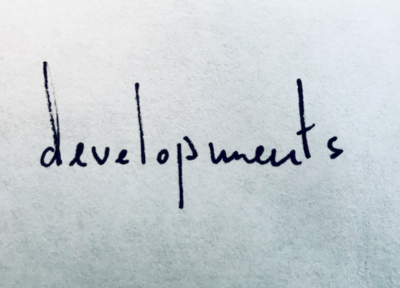

In France, very often the difference between a studio and an agency is not the number of people but whether you have specific people handling strategy in the process. A lot of studios – not the ones specialised in branding but a good number – are still working without a planned strategy, presenting an idea sometimes without a strategic background.
Maybe they are doing strategy, but they never call it strategy. It’s also a label for something.
In most art schools (and it’s evolving a bit now) students were not trained to have a strategic frame.
Correct, but I don’t think they still teach that.
Strategists are all coming from different backgrounds, usually with an interest in human sciences and sometimes having gone through communication masters. And quite often it’s an account director who was thinking too much and who gets moved. (laugh)
In terms of career strategy what do you consider essential?
You need to be clear for yourself where you want to go… It’s a difficult question…
For the studio, every year we set a goal of what we want to do and where we want to go.
I think having an idea or looking forward is important because it pushes you through the course of the year. As a collective also: it’s not only about the people that lead, everybody should know about it. It helps you to be aware and make certain decisions. For example, with the studio in the last years, we focused more and more on motion. This didn’t happen accidentally, it’s something that we really looked into, something that we wanted. It felt comfortable in the development of our work but also, we felt that within design, it was the next step. If motion is the next step, then that means you need to make room for designers to learn more motion, or the next person you hire needs to have motion skills.
Long-term focus really helps you, and it helps you personally.
Studio Dumbar got integrated in Dept Agency four years ago. That’s a big strategic decision, do you remember the process?
Yes, it was quite big. I’m never going to forget the process…
It was always in the back of our mind. We were 100 % focusing on identity and design but we wanted to take the next step in digital. When it comes to taking the next step in digital, you either grow a team or combine forces with someone who is already strong in digital. We could have made the team grow, but we got the opportunity: we were asked by Dept if we would like to join them. It’s not easy to say “OK, tomorrow, let’s get together with that big agency”. It took a lot of thinking: the pros, the cons, what this would mean such as “We’re no longer independent, we’re going to be part of a bigger company… ”
It also meant we had to change location… We used to be in a space for 30 people and suddenly we were in a workspace for 250 people, with 1500+ colleagues. Some people were saying it was the craziest decision to take but really this was the best one. Especially considering we wanted to go more into motion and everything there is digital. Suddenly you are immersed in the digital world. It’s similar as being in a chocolate factory. You even dream chocolate. It was a fantastic influence and it became a reflexion: we became more who we are. When you go into a different environment you realise what you stand for.
You went from intern to creative director at Studio Dumbar then you went from independent studio to international group. How does the relationship work with Dept senior management? Do you see each other very regularly? Are you in the same office and working on the same project?
Yes. But again, Dept is Dutch by origin so the organisation is relatively flat. Everybody is approachable. If you send a message to the CEO he will reply within seconds, there are no huge divisions, we are all working together. It’s a relatively young company, the average age at Dept is around 30 and the companies that are joining all have an eagerness and that spirit.
How many companies are in total in Dept?
15 or 16, I would need to check but we are about 1500 people.
That big structure helps in term of business development?
Yes, we work together. Projects come in and sometimes they are more branding related, so we can join forces, and vice versa when we need more help.
We share finances together, all the systems are shared. That makes it really easy to work with different people and to work across countries, we can work with Dept UK or Dept Denmark or the US. When you are on your own, you are limited to only what you can offer. In Dept we can involve any expert from any country, but we also work with external partners if necessary.
Now that you are in a bigger group, has your relationship to pitches/competitions changed?
We still pitch on projects as Studio Dumbar. If there is a big digital question, being part of Dept definitely helps in a good way. Sometimes we are part of a bigger Dept team in a pitch or we invite a Dept colleague in a Studio Dumbar pitch, we are one company with different specialism.
Big agencies need to have a lot of pitches whereas as Studio Dumbar, you probably could choose whether you wanted to pitch or not. What’s your relationship to pitches/competition?
(laugh). Ideally, we would not have these pitches, I will never understand these things. Doing a more strategic pitch and getting to know each other in mentality and way of working is really good. But I don’t believe in creative pitches. We believe in really working together with a client, having access, really learning to understand them. You cannot develop the best answer in splendid isolation.
The fact that you went from independent to part of a bigger group is really interesting … We’ve met a few studios that have been offered similar deals and will love to read about that. That shows them under which conditions it can work. Sometimes we advise some not to do it because the buyer is just trying to buy the creativity, but they will disintegrate the studio’s culture in that group, and obviously the creativity.
I agree with you, you hear a lot of those stories. You go away and suddenly the creative team is taken apart and the company disappears. That’s most of the stories I’ve heard in the past with studio joining big agencies.
But understanding and learning Dept before we stepped in really helped us to understand their mentality. It’s not that you take out all the culture of the companies to take this big new thing. The differences are also cherished. The advice is that you need to study well the company, learn from it, look at its history, the future plans, and most of all really grasp their true mentality, culture, and personality, understand what your own culture might risk, but also what it can gain.
You’ve got that autonomy as well in term of recruiting creative people, what is the recruitment process at Studio Dumbar?
If there is a lot of work, we recruit… For example we wanted to focus more on motion, so we looked for designers with motion skills to the point that we were looking to appoint designers with only motion skills…
The process, it’s simple: we do one post on Instagram. We get a lot of applications, I go through it and come down to a list of 50 people. With a team of four, we look at all these portfolios, reduce the list to about five people for the interviews. From the interviews, we will go down to two people, re-do interviews with these people meeting the rest of the team. And from that we make a choice.
What other skills are you looking for – I mean apart from being good at motion design?
Autonomy, authenticity, and of course that we get along… We spend so much time together. Everybody is different in the team. Sometimes, you see a studio and you think the people could be hanging out together all the time. What unites us is the love of the work we have and the will to work together. We admire each other’s skills and we enjoy working together. It’s the love of work that makes us a team. Having a sense of humour, not taking things to heavily is also very important. We can make jokes about our work and tell each other it’s shit. (laugh) Humour is essential. Everybody has their own speciality: some focus on type, some on coding, others on 3D motion. There are different specialists but also people who are more generalist, you try to make sure that as a team you have the right balance and mixture.
There is a quote that I always use: “We are like a pancake”. (laugh) When you make a pancake you need good eggs, good flour, and good milk. All elements need to be good to make good results. That goes for any position in the studio. You can’t be a good creative director and have OK-designers, or the other way around. Everything has to be performed in a good way and equal level. That’s the pancake mentality. Plus, it’s a Dutch thinking … Well, obviously that says a lot about Dutch cooking. (laugh)
How did you learn about management? Is it something you thought you would be doing when you were young?
Obviously, when you are 6 years old, you don’t make a statement like: “Oh yes I’d like to be a manager!” (laugh). I learnt it on the way, I’m learning it… I’m still learning.
Do you have strategic references such as the way one architect sold an idea, or you could have been reading Machiavel or Sun Tzu like business schools students?
Oh, like when I watched Mad Men and I thought that guy’s strategy is good! (laugh)
I wouldn’t say so. But in the studio, I work with Tom and Wouter (Tom Dorresteijn and Wouter Dirks, Ed.). Tom is responsible for the strategy, Wouter is responsible for the operations management on an everyday basis, and I am responsible for the creative. It’s really about the collaboration and the combination of the three of us when it comes to projects. Tom really is the strategy, so he plays the biggest role, I play a role in strategy but it’s more taking the strategy and expressing it through design.
Covid put aside, how would you describe the current creative market? You started answering that by stating you want to move to motion and that you couldn’t imagine graphic design not being animated… So how would you describe it?
Last year because of Covid, it pushed almost 100 % to digital. Graduating students, … It’s going to be hard for the next year, but they had a digital graduation show. That already puts you in a different mindset. Customising digital tools is something we are working on, to make very personal experiences. As a side note, I think that things which are printed are becoming more and more precious.
Things are also becoming a lot more democratic: people have more voices, women have more of a voice, a lot of people are speaking up, not a lot of issues have been solved but I think it’s progressing and that’s very good.
What do you observe among these young talents? When you recruited in motion design, what did you see in this young generation? What do you like, what do you like less?
What I like is that 99 % of the graduates share their work digitally. It gives a lot of people visibility, that’s really great. What I like less is that sometimes you see how people are inspired by others and you see these waves and trends. You see portfolios that hit the trends but miss a bit the voice.
What advice would you give to a young person that would fall in those trends traps. As per in Mad Men’s times, “A trend is a trap”…
It’s a trap but it’s like a honey trap. It’s not a problem: following trends and fashion is not bad, there is a reason for it, and it comes and goes. But it’s just you need to be conscious of it and try to create your own answer and reality, that’s what is important.
Would you say it’s the same evolution about fonts and font/type designers?
Well yes, but I think it’s with everything that we are designing.
But you are passionate about font and you were making Typeradio?
It’s more being passionate about the designer themselves than about the design. I like the design but I’m more curious about the person behind.
I have listened to some of them, they are all about the education and personal history…
Yes, because then you get to the heart of it. If you ask a lot of design questions, you end up hearing the same answers over and over. If you ask about their life, you start getting all these different stories and you know more about who they are and what they are.
If you watch some of the abstract design on Netflix, most of them end up talking about their father or their mother…
Exactly!
If you could do a similar job during another historical era?
Being Greek, I would have loved to have lived in Athens in the 5th century during the Golden Age. And the chance of meeting one of the great playwrights such as Sophocles. Unfortunately being a woman at that time would not allow me the same privileges as men, so being in a similar job would be impossible.
Are there books which have helped you during your career?
Books have been by my side as long as I remember. I am a book collector. And of course as time passes my interests change. The book that made the biggest impression is Kiss Kiss by Roald Dahl. The element of surprise in every story is something I admire and I try to bring that to design.
What’s your advice for creative talents starting a career nowadays?
Do what you love, no matter what, even if you don’t pursue a creative career.
And for those who want to develop a branding agency?
Do what you love.
